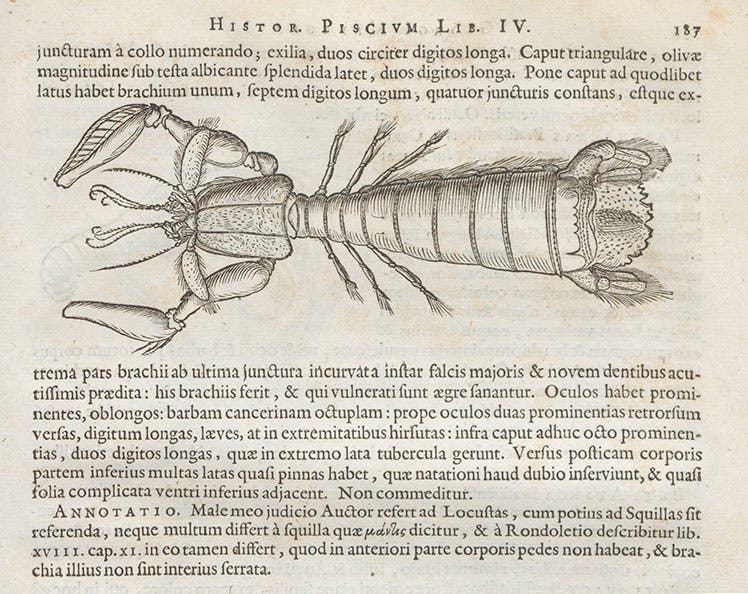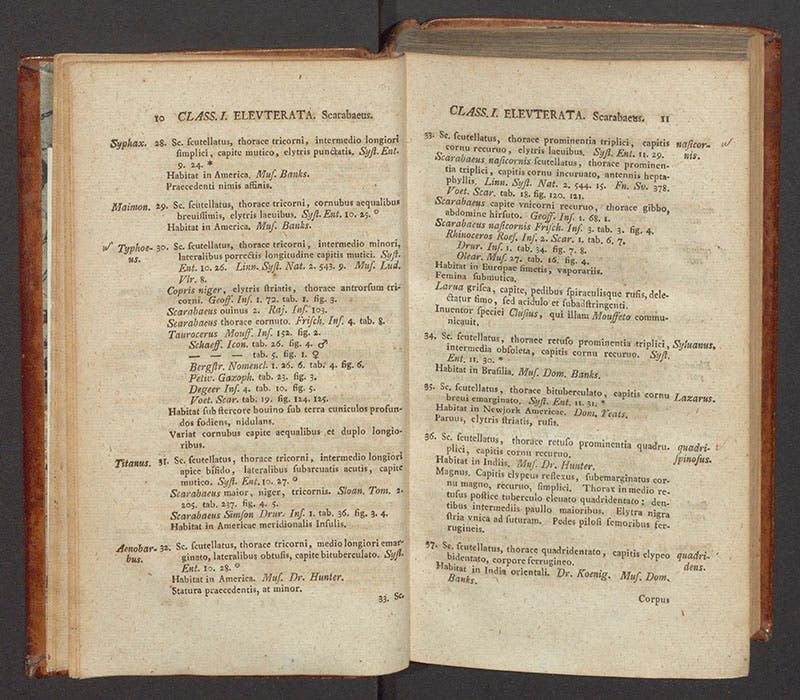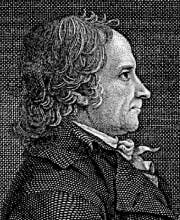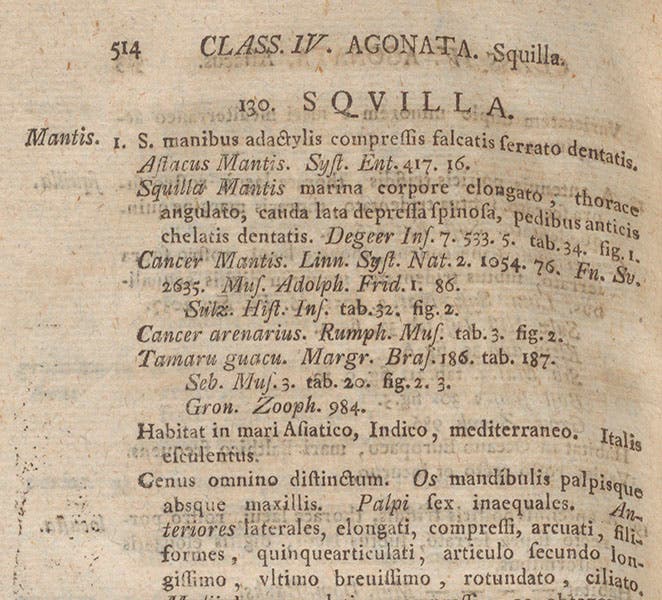Scientist of the Day - Johann Christian Fabricius

Mantis shrimp, woodcut by Georg Markgraf, from Willem Piso, Historia naturalis Brasiliae (1648), and cited by Johann C. Fabricius, Species Insectorum, 1781 (Linda Hall Library)
Johann Christian Fabricius, a Danish zoologist, was born Jan. 7, 1745. Fabricius studied under Carl Linnaeus in Uppsala for several years and adopted the Linnaean taxonomic system with its binomial nomenclature. Fabricius then proceeded to apply the system to insects, which had not much interested Linnaeus and were included only cursorily in Linnaeus’s Systema naturae. Fabricus greatly expanded on insect taxonomy in his Systema entomologiae (1775), which we do not have here in the library, and then his Species insectorum (1781), in two volumes, which we do have (second image). By this time, he was a professor at the University of Kiel, where he would teach until his death in 1808.

Title page, Johann C. Fabricius, Species insectorum, 1781 (Linda Hall Library)
Since his Species insectorum is unillustrated, we thought it might be interesting to look at Fabricius’s sources. He was very diligent in providing a complete list of references at the beginning of his description of each insect species (bear in mind that the term “insects” in the late 18th century encompassed a variety of invertebrates, including crustaceans). For example, when discussing the mantis shrimp, which he called Squilla mantis, Fabricius cited Georg Markgraf’s Natural History of Brazil (1648), which he claimed has an image on p. 187 (third image). We happen to have Markgraf’s book in our collections, and sure enough, Markgraf has a fine woodcut of a mantis shrimp on the cited page, which we reproduce here (first image).
Earlier in the book, Fabricius named and described a variety of scarab beetles, and for one species, the Hercules beetle, he again listed Markgraf as a pictorial source. We checked it out, and sure enough, Markgraf has three woodcuts of large horned beetles on the cited page – here is the one to which Fabricius refers (fourth image).

Hercules beetle, woodcut by Georg Markgraf, from Willem Piso, Historia naturalis Brasiliae (1648), and cited by Johann C. Fabricius, Species Insectorum, 1781 (Linda Hall Library)
In his section on Goliath beetles, two pages of which we reproduce here (fifth image), Fabricius frequently inserted the phrases “Museum domo Banks” or “Domo Hunter” or “Drury”. He referred here to the private museums in the homes of Joseph Banks, William Hunter, and Dru Drury in London. Fabricius had travelled to England and had been introduced to Banks, Hunter, and Drury by Daniel Solander, the Linnaean apostle who had voyaged with Banks and James Cook on the first Cook circumnavigation; Solander had then taken up residence in London. Fabricius was invited to view their collections and, when his expertise became evident, to arrange and classify them, functioning in many ways as a guest curator. The Banks, Hunter, and Drury collections are cited continually through Fabricius’s two volumes.

Two-page opening of the section on goliath beetles in Johann C. Fabricius, Species insectorum, 1781, citing the collections of Joseph Banks, Dru Drury, and William Hunter (Linda Hall Library)
We also have in our collections an expanded edition of Fabricius’s first book, now called Entomologia systematica emandata et aucta (1792-98) in 8 bound volumes. We did not attempt to include this work in our discussion today.

Portrait of Johann Fabicius, engraving, date and source unknown (University of Kiel)
For a portrait of Fabricus, there is not a lot to choose from. We opted for the small engraving included on the webpage for Fabricius posted by the University of Kiel (sixth image).
Dr. William B. Ashworth, Jr., Consultant for the History of Science, Linda Hall Library and Associate Professor emeritus, Department of History, University of Missouri-Kansas City. Comments or corrections are welcome; please direct to ashworthw@umkc.edu.





![Columbine, hand-colored woodcut, [Gart der Gesundheit], printed by Peter Schoeffer, Mainz, chap. 162, 1485 (Linda Hall Library)](https://assets-us-01.kc-usercontent.com:443/9dd25524-761a-000d-d79f-86a5086d4774/3829b99e-a030-4a36-8bdd-27295454c30c/gart1.jpg?w=210&h=210&auto=format&fit=crop)

